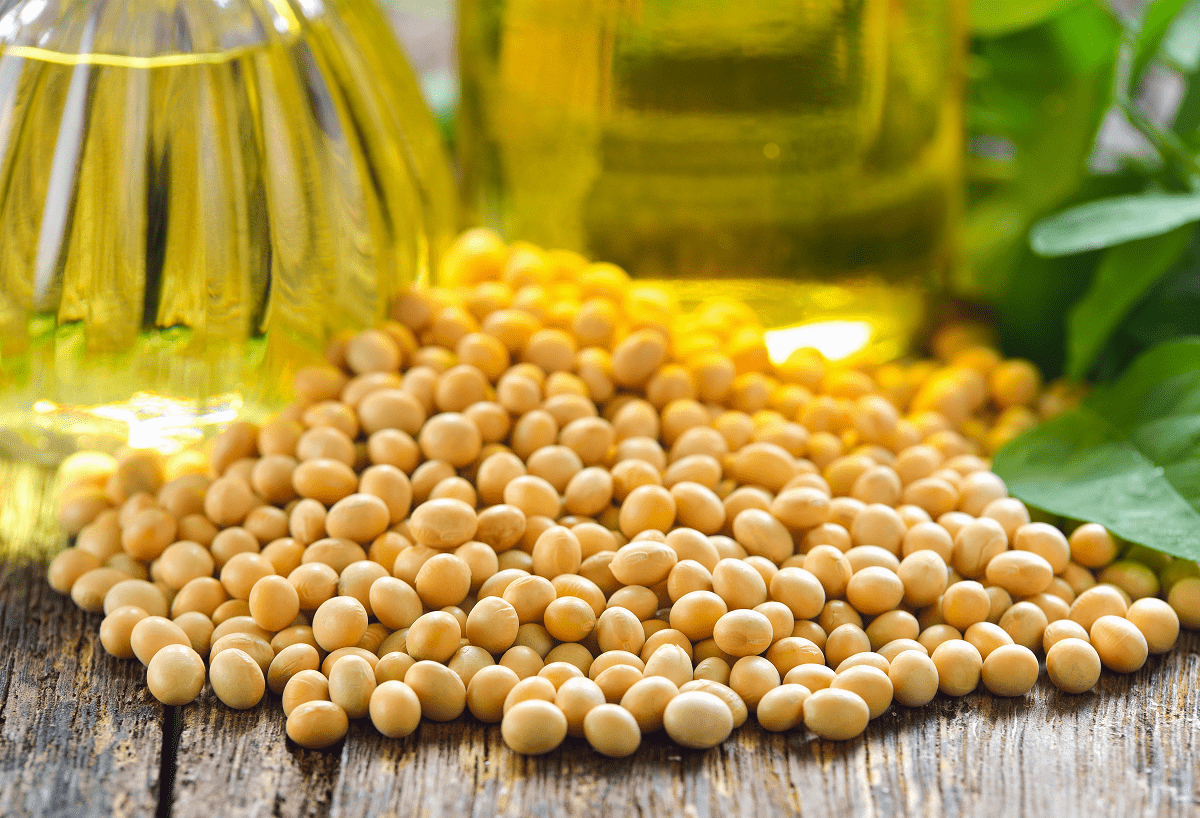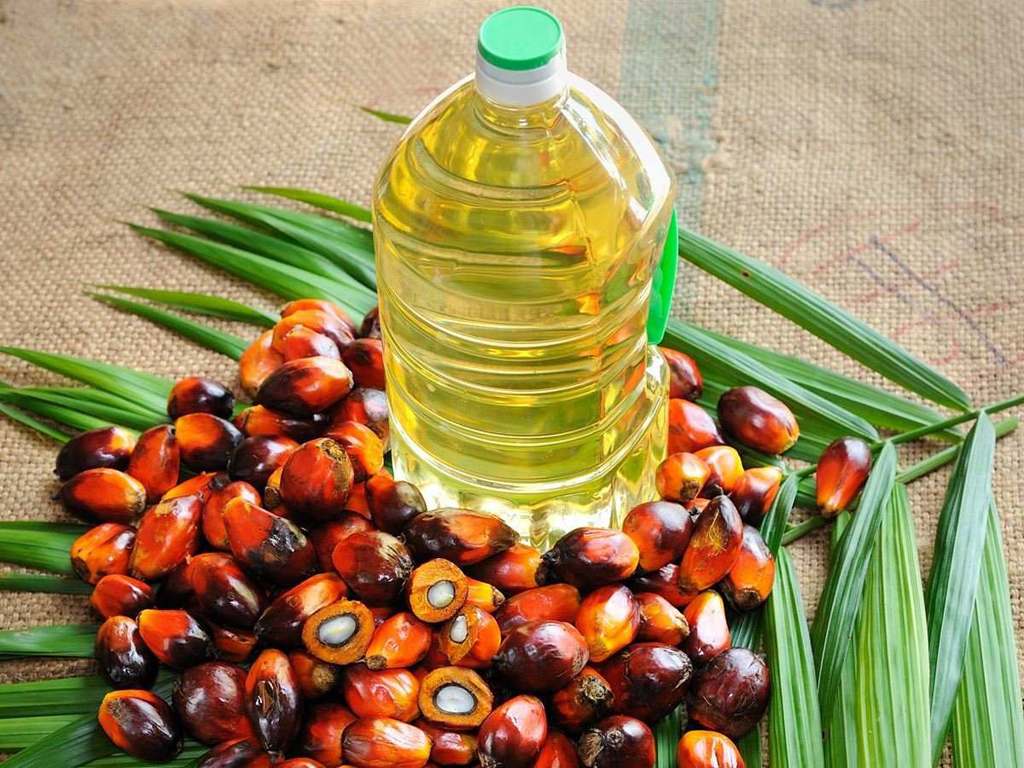Today Comprehensive Update on Soybean Futures and Crop Result
Today march 25, 2024 market for May delivery Soybean futures surges 16.75¢, settling at $12.0 ¼ per bushel. Meanwhile, Soymeal witnessed a $2.6 Up, reaching $341.30 per short ton, while also soy oil took a 1.38¢ Increase, closing at 48.96¢ per pound.
|
Soybean |
||||||
| Contract | Last | Change | Open | High | Low | Close |
| 24-May | 12.0925 | 16.75 | 11.94 | 12.1 | 11.885 | 12.0775 |
| 24-Jul | 12.2175 | 16.25 | 12.065 | 12.225 | 12.0075 | 12.2 |
| 24-Aug | 12.1825 | 15.5 | 12.035 | 12.1875 | 11.9775 | 12.165 |
|
Soybean Oil |
||||||
| Contract | Last | Change | Open | High | Low | Close |
| 24-May | 0.4902 | 1.38 | 0.4775 | 0.4909 | 0.4755 | 0.4896 |
| 24-Jul | 0.4957 | 1.36 | 0.4836 | 0.4964 | 0.4812 | 0.495 |
| 24-Aug | 0.4952 | 1.35 | 0.4831 | 0.4957 | 0.481 | 0.4942 |
|
Soybean Meal |
||||||
| Contract | Last | Change | Open | High | Low | Close |
| 24-May | 3.417 | 2.6 | 3.389 | 3.428 | 3.366 | 3.413 |
| 24-Jul | 3.453 | 2.2 | 3.431 | 3.463 | 3.405 | 3.447 |
| 24-Aug | 3.46 | 1.6 | 3.435 | 3.472 | 3.418 | 3.456 |
US Soybean Crush Facilities: Impact on Renewable Diesel Industry
- Soybean Crush Capacity Growth
The surge in demand for renewable diesel production in the United States is driving a rapid expansion of soybean crush facilities. However, this expansion may pose risks of overbuilding, potentially jeopardizing the sustainability of new, high-cost facilities in the long run, as revealed by a recent study conducted by CoBank’s Knowledge Exchange.
- Soybean Oil: Key Feedstock for Bio-based Diesel
Soybean oil stands as the primary feedstock for bio-based diesel production, boasting substantial growth potential owing to its abundant domestic availability compared to other feedstocks. According to CoBank, soybean crush capacity in the US has witnessed a notable 7% growth in the past three years, with expectations of a further 23% increase in the next three years. This growth primarily involves the construction of new greenfield facilities, with plans for the establishment of 11 new plants within the coming three years, alongside four expansions or retrofits aimed at processing oilseeds.
- Global Competition and Market Dynamics
The growth in US soybean meal exports during 2023, driven by a historic drought impacting Argentina’s soybean crop, highlights the intensifying competition for market share in the soybean meal export market. Unless faced with similar crop failures in South America, the United States will likely encounter heightened competition, particularly in key markets such as Southeast Asia. Consequently, maintaining competitiveness, particularly in terms of pricing, becomes imperative for US exporters.
| USDA’s Weekly Grain Export Inspections Report | |
| Week Ended March 21, 2024 | |
| Corn | |
| Actual (MT) | 1,227,955 |
| Expectations (MT) | 900,000-1,350,000 |
| Comments | Export inspections are down 98,332 MT from last week’s tally. Inspections are running 33.6% ahead of a year ago, compared to 31.3% ahead last week. USDA projects exports in 2023-24 at 2.100 billion bu., 26.4% above the previous marketing year. |
| Wheat | |
| Actual (MT) | 315,395 |
| Expectations (MT) | 250,000-500,000 |
| Comments | Export inspections are down 79,084 MT from the previous week’s figure. Shipments are running 15.1% behind a year-ago, compared to 15.6% behind last week. USDA projects exports in 2023-24 at 710 million bu., down 6.5% from the previous marketing year. |
| Soybeans | |
| Actual (MT) | 768,711 |
| Expectations (MT) | 400,000-1,000,000 |
| Comments | Export inspections are up 68,466 MT from last week’s tally. Inspections are running 18.7% behind a year ago, compared to 18.8% behind last week. USDA’s 2023-24 export forecast of 1.720 billion bu., which is 13.7% below 2022-23. |
Implications for China’s Soybean Production
- Implications for China’s Soybean Production
A report released by the Foreign Agricultural Service (FAS) of the US Department of Agriculture sheds light on anticipated shifts in China’s soybean planted area for the 2024-25 marketing year. Projections indicate a reduction in soybean planted area from 10.05 million hectares to 9.95 million hectares, accompanied by a slight decline in production from 19.7 million tonnes to 19.6 million tonnes. This adjustment is attributed to factors such as lower domestic prices, high carry-in stocks from the previous year, and more favorable margins for corn cultivation.
- Chinese Government’s Initiatives
Despite efforts by the Chinese government to bolster self-sufficiency in grains and oilseeds, China remains the largest importer of soybeans globally. The government’s emphasis on expanding the planted area for genetically modified (GM) corn and soybeans aims to enhance domestic production. While these GM varieties are yet to attain full commercial cultivation status, their inclusion in approved areas reflects ongoing efforts to boost soybean output.
Brazil Soybean Harvest
Brazil’s soybean harvest progress for the 2023/24 cycle indicates steady advancement, with approximately 69% of the planted area harvested as of the latest update. Notably, this figure slightly trails the progress observed at the same time in the previous year. The harvesting activity is concentrated in the Matopiba region and the southernmost state of Rio Grande do Sul, where producers report favorable yields.
|
Region |
Harvest Progress |
Yield Estimate |
|
Mato Grosso |
95.60% |
– |
|
Parana |
73% |
3,329 kg/ha (49.6 bu/ac) |
|
Rio Grande do Sul |
3.50% |
– |
|
Sao Paulo |
– |
3,050 kg/** (45.4 bu/ac) |
|
Soybean Yield Impact |
||
|
Municipality |
Region |
Yield Reduction |
|
Camargo |
Parana |
Down 30% To 40% |
|
Sao Borja |
Rio Grande do Sul |
Dryland: 40 sacks/ha (35.7 bu/ac) Irrigated: 60 sacks/ha (53.6 bu/ac) |
|
Candido Mota |
Sao Paulo |
45% to 50% |
Argentina Soybean Crop Update: March 14th Ratings Show Improvement
- The Latest Ratings for Argentina Soybeans
Argentina’s soybean crop condition as of late last week shows promising signs of improvement, with 54% rated as fair, and 30% classified as good/excellent. However, concerns remain as 16% of the crop is still rated as poor/very poor.
- Improvement in Crop Ratings
The Buenos Aires Grain Exchange reported a 1% increase in the percentage of soybeans rated as good/excellent compared to the previous week. This improvement reflects positive developments in the overall health of the soybean crop.
- Soil Moisture Conditions
Recent data reveals that 77% of the soil moisture for soybeans is favorable/optimum, marking a 5% increase from the prior week. However, challenges persist as 23% of the soil moisture is still rated as short/very short.
- Rainfall Patterns
Last week, rainfall in Argentina favored several regions, including north-central, northern, and eastern areas. However, heavy rainfall in eastern Buenos Aires raised concerns about localized flooding. More rainfall is expected in Buenos Aires, Santa Fe, and Entre Rios, with forecasts suggesting limited precipitation in the coming weeks.
- Soybean Processing
Argentina processed 2.35 million tons of soybeans in February, indicating a 10.5% increase from the previous month. This rise in processing activity underscores the significance of soybeans in Argentina’s agricultural sector.
- Production Forecasts
The Secretariat of Agriculture, Livestock and Fisheries (SAGyP) has revised its sunseed production estimate for MY 2023-2024 to 4.4 million tons, reflecting a 2.2% decrease from its previous forecast. Similarly, BASE has adjusted its seed crop estimate to 3.6 million tons, signaling a reduction compared to earlier projections.
- International Estimates
While the U.S. Attache lowered its soybean estimate to 49.5 million tons, the Rosario Grain Exchange raised its estimate to 50.0 million tons. These contrasting estimates highlight the uncertainties surrounding global soybean production.
Oilseed Outlook in Russia
- The Latest Ratings for A
Russia anticipates an increase in the area under oilseeds in 2024, with projections suggesting a growth to over 17 million hectares. Notably, the area under soybeans is expected to expand immediately to 4 million hectares, driven by high margins and intense competition among processors.
- Challenges and Opportunities
Despite the positive outlook, concerns persist regarding the quality of domestic seeds and the availability of seeding material for certain crops like rapeseed. However, the market shows signs of recovery, particularly in oilseed flax crops, following a period of oversupply and price collapse.
Canola Exports from Canada
Canada has shipped approximately 3.8 million tons of canola to foreign markets since the beginning of the 2023/24 season. This marks a decline of 34% compared to the previous year. Additionally, the country has exported 3.2 million tons of soybeans, reflecting a 7% increase from the same period last year.
- Drought Concerns
Drought maps indicate that the Canadian prairie region is facing more severe drought conditions compared to the previous year. This situation underscores the importance of reassessing fertilizer needs and monitoring herbicide carryover to ensure optimal crop performance, particularly sensitive crops
|
Commodity |
Export Volume (million tons) |
Change from Previous Year |
|
Canola |
3.8 |
-34% |
|
Soybeans |
3.2 |
7% |
|
Wheat |
15.7 |
-4% |
|
Grain Durum |
2.2 |
-38% |
|
Barley |
1.3 |
-40% |
|
Corn |
0.6 |
-42% |
|
Oats |
0.9 |
No change |
In conclusion,soybean market’s intricacies reflect a delicate dance of supply, demand, and global dynamics. As we navigate these fluctuations, staying attuned to market trends agricultural forecasts is paramount across the supply chain. So we are predicting that soybean market project a Neutral To slightly bullish trend Projections and as well in hovering within the range of $11.5 to $12.5 per bushel.



